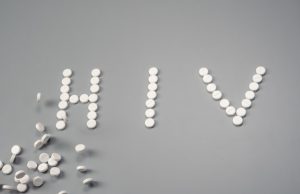Influence of Combined ART Drugs on Dolutegravir Trough Levels in AIDS Treatment
- Why do peanut allergies cause death in Europe and North America but rarely occur in East Asia?
- Influence of Combined ART Drugs on Dolutegravir Trough Levels in AIDS Treatment
- H5N1 avian influenza virus detected in pigs for the first time in US
- Higher Rates of Depression Among People Living with HIV
- Why does Switzerland allow assisted suicide but prohibit euthanasia?
- Doctor Warning: The Danger of Gulping Down Sports Drinks After Exercise
Influence of Combined ART Drugs on Dolutegravir Trough Levels in AIDS Treatment
- Can Gene Therapy Provide a Cure for HIV?
- Sanofi Japan Data Breach: 730000 Healthcare Professionals’ Information Exposed
- CT Radiation Exposure Linked to Blood Cancer in Children and Adolescents
- FDA has mandated a top-level black box warning for all marketed CAR-T therapies
- Can people with high blood pressure eat peanuts?
- What is the difference between dopamine and dobutamine?
- How long can the patient live after heart stent surgery?
Influence of Combined ART Drugs on Dolutegravir Trough Levels in AIDS Treatment
A clinical study published in AIDS (May 2024) explores how co-administered antiretroviral therapy (ART) drugs impact dolutegravir (DTG) trough concentrations in patients with HIV.

Dolutegravir, a second-generation integrase inhibitor, is widely used in ART regimens due to its potent antiviral activity, high resistance barrier, and minimal interactions with other drugs. Research has shown that certain ART combinations can influence DTG pharmacokinetics. For instance, regimens containing atazanavir or switching from ritonavir to cobicistat can significantly raise DTG levels. Currently approved two-drug regimens that include DTG, such as DTG + lamivudine, DTG + rilpivirine, DTG + doravirine, and DTG + darunavir/cobicistat, have varied pharmacokinetic profiles. However, data on these combinations are limited as existing research mostly involves small or selective samples.
This study gathered 8 years of therapeutic drug monitoring (TDM) data from HIV patients at a hospital to assess the effects of co-administered ART drugs on DTG trough levels, with a focus on real-world two-drug combinations.
Study Results
Between September 2015 and March 2023, 493 HIV patients participated, yielding 900 TDM measurements, of which 352 (39%) were excluded for incomplete or incorrect sampling data. A final analysis included 548 TDM records from 354 patients, with a median age of 53 years, and 29% were female.
DTG trough concentrations varied widely with a median of 1717 ng/mL and an interpatient variability of 65%. Using the DTG + lamivudine group as a control (1562 ng/mL), it was found that patients on non-nucleoside reverse transcriptase inhibitors (NNRTIs) had similar DTG levels (1855 ng/mL, P = 0.574). However, further analysis showed that first-generation NNRTIs like nevirapine and efavirenz either decreased or increased DTG concentrations (see Table 1).
In protease inhibitor (PI)-based regimens, DTG trough levels were significantly higher than in the control (1886 ng/mL, P = 0.004), especially in the atazanavir subgroup, whether boosted with ritonavir or cobicistat (both P < 0.05). Conversely, the darunavir/ritonavir subgroup exhibited reduced DTG concentrations (909 ng/mL, P = 0.002).
Discussion
This extensive analysis of DTG monitoring over eight years confirmed that co-administered ART drugs influence DTG trough concentrations. For instance, nevirapine and efavirenz, which induce DTG’s primary metabolizing enzyme UGT1A1, reduce DTG levels, while atazanavir, an enzyme inhibitor, raises DTG concentrations. Notably, ritonavir lowers DTG levels by 20-30% through enzyme induction, while darunavir/ritonavir lowered DTG concentrations by almost 50% compared to the DTG + lamivudine group.
Interestingly, rilpivirine in two-drug regimens showed the greatest increase in DTG levels, although mechanisms remain unclear. Previous Phase I studies in healthy subjects noted a 25% increase in DTG levels with rilpivirine after one week, while this study showed over a 40% increase with at least three months of use, suggesting consistent findings.
This study demonstrates that co-administered ART drugs can variably impact DTG concentrations. While darunavir/ritonavir lowered DTG trough levels, darunavir/cobicistat and rilpivirine significantly raised them. As a retrospective observational study, it couldn’t assess clinical outcomes, but findings suggest that a DTG + rilpivirine combination may offer an advantage, especially when co-administered with drugs that reduce DTG bioavailability, such as mineral supplements or enzyme inducers.
Influence of Combined ART Drugs on Dolutegravir Trough Levels in AIDS Treatment
Reference: Cattaneo D, Pagano S, Colombo ML, Giacomelli A, Gori A, Gervasoni C. Different effects of the companion antiretroviral drugs on dolutegravir trough concentrations. AIDS. 2024;38(6):847-851. doi:10.1097/QAD.0000000000003843
(source:internet, reference only)
Disclaimer of medicaltrend.org
Important Note: The information provided is for informational purposes only and should not be considered as medical advice.



